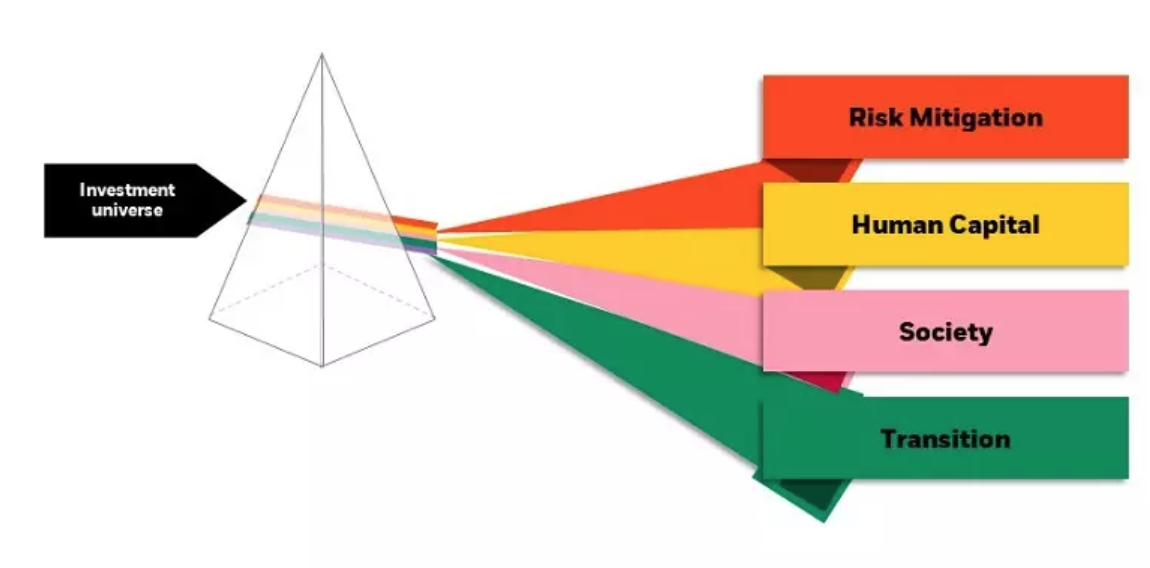by Anna Hawley and Jeff Chen, SAE, Blackrock
The view by many is that ESG investing is concessionary in order to achieve the outcome. Our history shows that isn’t true and that unique ESG data can be predictors of company results. Sustainability goals and environmental, social, and governance (“ESG”) measures are no longer novel concepts as they become more mainstream investment topics. Investors, companies, and regulators are increasingly striving to understand why investments with positive ESG attributes are important to integrate. However, they might still struggle with how to achieve better ESG outcomes or know what ESG-related information is necessary to make the right investment decisions. In this Insight, Anna Hawley and Jeff Shen reveal why ESG and future profitability are linked, and how big data can help investors understand which companies could outperform peers in the long run.
An inflection point for ESG
Currently, there’s no single standard for how ESG information should be analyzed and disclosed. Because of this, investors tend to rely heavily on generalized ESG “scores” provided by a handful of vendors. Scores, however, have very little consistency across vendors, and none of them validate the link with firms’ performance on the E, S, or G dimension. In order to gain a deeper, more sophisticated understanding of ESG-related alpha drivers, investors are increasingly leveraging big data and artificial intelligence for ESG information collection and analysis. While ESG scores provide a static view, alternative data provides more dimensions of insight. Technology and innovation are becoming key to successful sustainability investing.
Similar to our observation with big data in 2008, sustainability insights benefit investment decisions by predicting company fundamentals without needing to rely on traditional data sources. ESG-related data also provides a distinct way to capture how companies, within each sector and industry, are innovating and adapting to thrive as the economy transitions to carbon neutrality. This is just one of the many powerful alpha opportunities that can be uncovered with ESG data analysis.
ESG sits on the verge of a major inflection point. Now, investors are able to measure sustainability on a much deeper level than simple screens based on value judgements. The availability of new sets of data and the ability to measure sustainability in unique ways have contributed to an increased demand in ESG-aware investing.
As systematic investors, we test and validate each insight through a rigorous research process, similar to scientific methods. This helps see past unsubstantiated environmental friendliness and basic ESG ratings. Most importantly, this scientific approach requires that findings are based in sound economic theory and that each investment decision is additive to a portfolio.
The ESG “prism”
ESG goals are not just about investing in companies the promote the best environmental, societal, and governance outcomes. Rather, looking at the investment universe from the lens of an ESG prism gives investors an even more comprehensive framework for how to identify companies that are best positioned for future long-term profitability, and hence, alpha opportunities for investors.

The ESG prism highlights four key components to evaluate companies on: risk mitigation, human capital, society, and transition. Companies that are aligned to these ESG goals are prioritizing these areas, and data can help investors predict which companies are doing so most efficiently.
Risk Mitigation insights seek to identify – and avoid – corporate pitfalls. Related data includes, but is not limited to, controversy information, news flow, cyber defense data, and tax transparency.
Human Capital insights reflect the impact employee welfare has on engagement and productivity. Related data includes but is not limited to, employee sentiment, diversity statistics, and employee benefits.
Society insights focus on improved social outcomes that also impact financial outcomes. Related data includes but is not limited to, social policies and ESG disclosures.
Transition insights identify how companies are preparing for the post-transition economy. Related data includes but is not limited to, carbon and water efficiency, FEMA research, and environmental innovation information.
ESG data, in practice
Take the “E” in ESG, for example. While it may not be readily apparent, a company’s strong environmental policies could have long-term benefits to their bottom line as they work towards thriving in a post-transition economy. While there may be an assumption that the opposite is true – that companies who disregard environmental policies have lower overhead costs – ESG and profitability are inextricably linked. Looking below the surface, our data and analysis have confirmed a clear connection.
One example that illustrates how companies’ environmental policies affect their bottom line is through Leadership in Energy and Environmental Design “LEED” data. How does LEED certification data influence returns? Companies that occupy LEED certified buildings tend to use less power, use renewable materials, and incorporate better construction methods in their buildings. Overall energy efficiency translates to lower operating costs.
Companies that pursue LEED certifications also tend to be run more efficiently. This thinking often pervades many aspects of an organization, and LEED data helps us identify this efficient behavior that has widespread impacts on a company’s profitability potential.
This combination of using big data and scientific analysis methods to identify ESG-aligned profitability is how BlackRock’s Systematic Active Equity (SAE) team manages our Advantage Series of funds. We invest in alpha wherever we find it and strongly believe that successful companies must evolve and adapt to a changing world and an economy in transition.
Identifying changemakers and future winners
An important distinction to make is that ESG data analysis is about finding relative differences – picking out the companies in each sector that show better measurements on these ESG dimensions than their peers. ESG integration doesn’t mean completely screening out oil and other environmentally impactful companies in the future. Oil companies will still exist in 2050, but their business will need to evolve into something that’s in-line with an ESG-conscious future. While no one can know for certain what these types of companies will look like 20 or 30 years from now, we can leverage the data we have today to identify which ones have the best potential to thrive in the long run. SAE’s data-driven processes allow us to examine more attributes for more companies, thus uncovering more opportunities for alpha in unique ways. For funds with an investment objective that include the integration of ESG criteria, there may be corporate actions or other situations that may cause the fund to passively hold securities that may not comply with ESG criteria.
The bottom line about the double bottom line is that investors don’t have to make performance concessions to achieve sustainable outcomes. ESG data is an indicator of future performance potential and should be incorporated into the investment mosaic of all the different types of data that are used to predict performance. Sustainability and financial profitability are inextricably tied, and the goal is to understand which companies will be winners in the long run. That’s where the alpha is.
 Anna HawleyLead Sustainable Portfolio Manager, SAE
Anna HawleyLead Sustainable Portfolio Manager, SAE
 Jeff Shen, PhDCo-Head and Co-CIO, SAE
Jeff Shen, PhDCo-Head and Co-CIO, SAE















